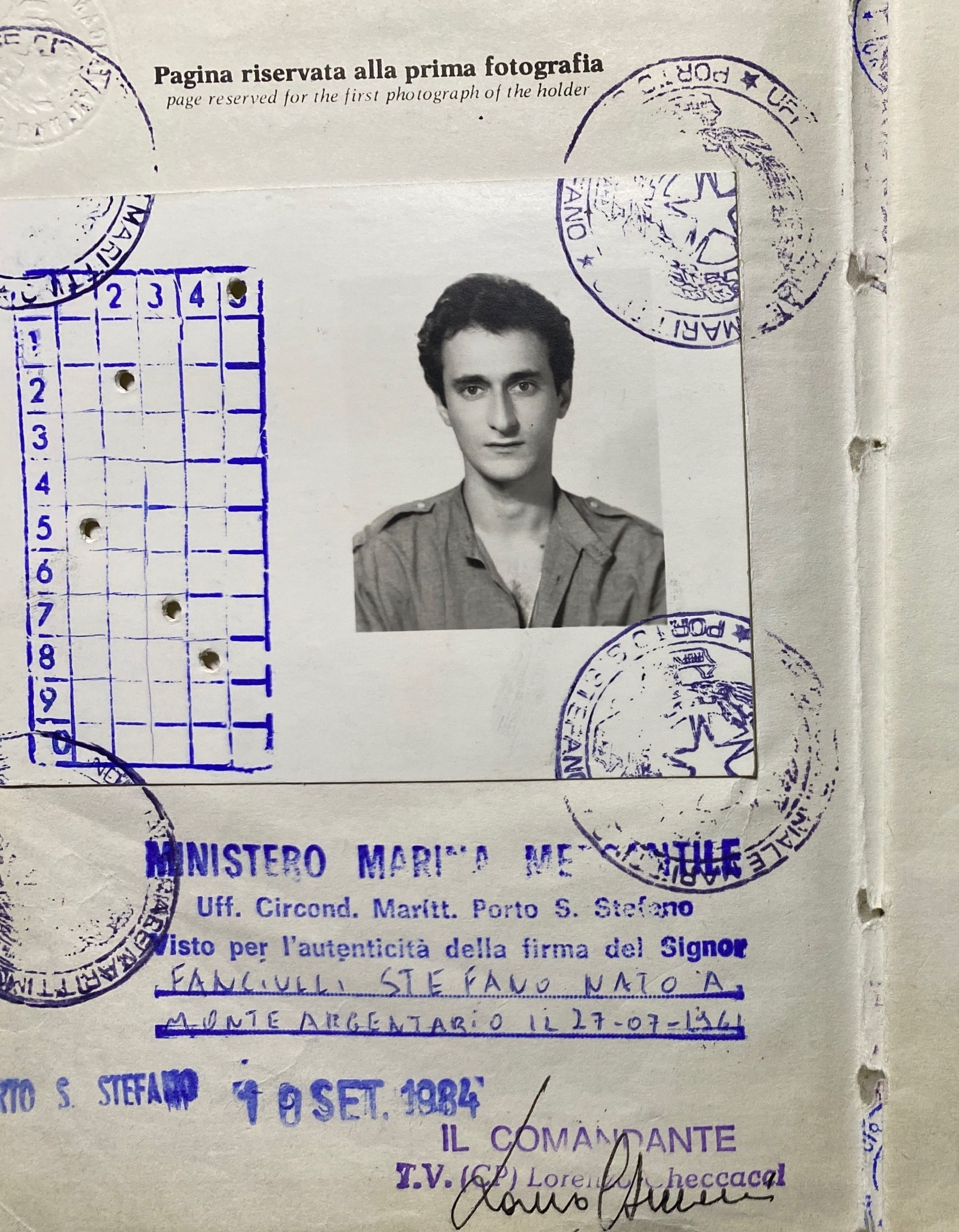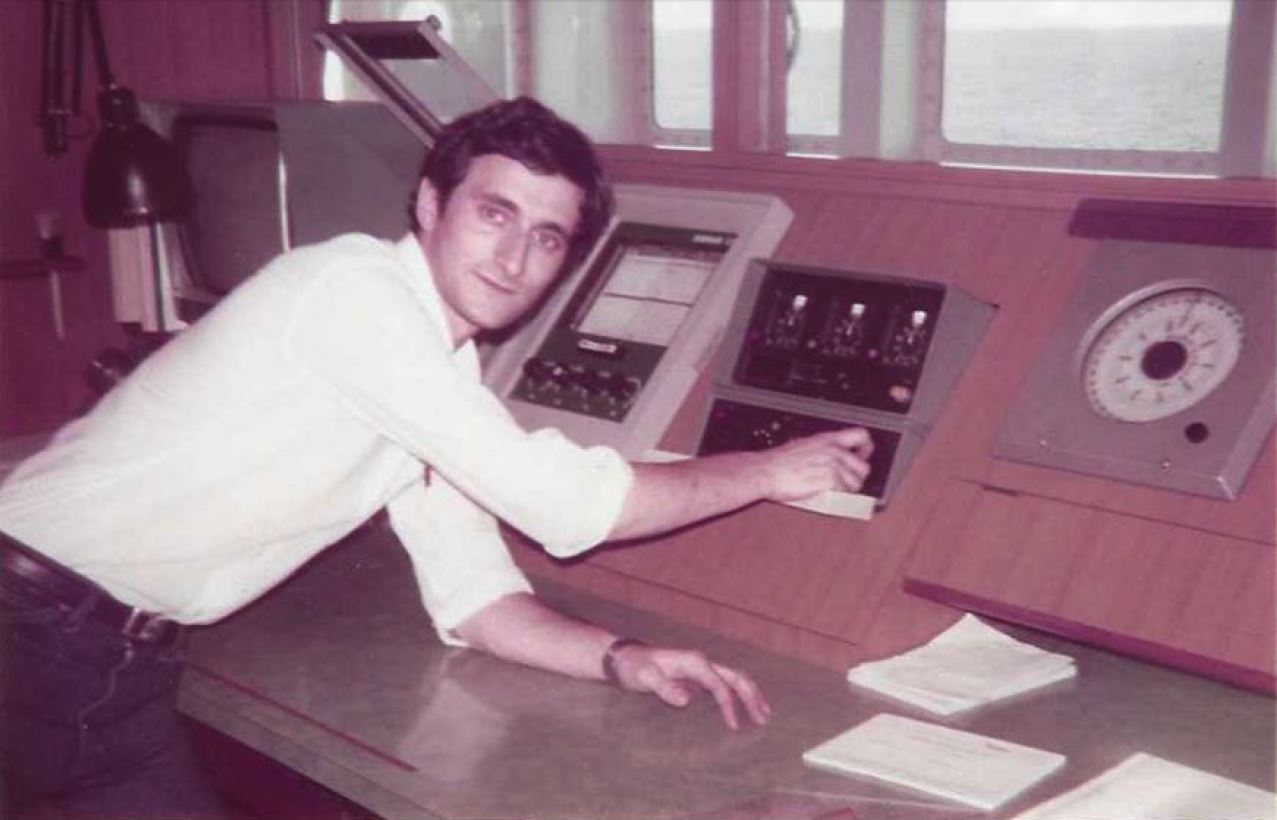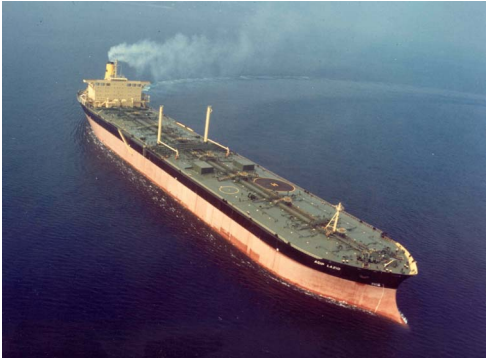A life at sea: commander Stefano Fanciulli's journey between past and present

The interview with the Master on the International Day of the Seafarer 2022
Navigation and the tales of the sea bring with them the charm of a world made up of unexpected discoveries, challenges and encounters. The personal events of seafarers' voyages take shape in these scenarios: lives spent at sea whose stages remain imprinted like footprints on the pages of the seafarer's books.
As every year, on 25 June the International Maritime Organisation celebrates the Day of the Seafarer, which has chosen the theme "Your voyage, then and now, share your journey" for the 2022 edition. Saipem wanted to celebrate this anniversary by sharing the journey of Captain Stefano Fanciulli who tells us about his career in the following lines, from the beginning all the way to his current position on board of the SAIPEM CONSTELLATION.
«I was born in a place where the sea is life. I dreamed of it from an early age, and now here I am: 44 years at sea and 22 in command». Born in Monte Argentario in the province of Grosseto in 1961, Captain Fanciulli began his career in 1981 on the Snam tanker fleet.
What memories and sensations does it evoke in your mind to go back to the days of your first embarkation?
I have a clear memory of those moments, especially the amazement I felt when I got on a ship that was more than 300 meters long and 60 meters wide. School gives you a theoretical basis but life at sea is very different, and it was on Snam’s oil tankers that I began to truly understand what “sailing” meant and how important it was to take the right path to become a good Officer: following the teachings of superiors and thinking carefully before making decisions.
Nine years later you switched to Saipem and embarked on the CASTORO 5. Was it a big change?
Definitely. At Snam I was First Officer, but I agreed to start over as Second Officer because I knew that it was a very different job: the CASTORO 5 pipe-laying barge, without propellers and with rectangular shapes, was the furthest I could imagine from the traditional ships of the merchant navy. I still remember that, when I got on board, I saw a sign under the bridge with two arrows: one pointing to the bow and the other to the stern. «What ship did I get on?» I asked myself, «if there is even a need to indicate where the bow and stern are...».
Beyond the ship itself, everything else was different too. The crew numbered up to 16 or 17 different nationalities and was made up of both seafarers and technicians and professionals who had nothing to do with the sea and navigation. It was not easy at first, but I soon fell in love with it and after only a month I found myself head guard.
In 1992 you were on the CASTORO SEI, which we have recently dismissed. What kind of experience was it?
I had the honour of serving on the CASTORO SEI for eight years; I say honour because the CASTORO SEI was known to all of us seafarers as "the university of anchors" for the complex and sophisticated system of pipe laying allowed by the anchors handling: in other words, the ship moved like a spider along the laying of the pipes using the movement of the anchors.
While navigating, the routes of other ships and inevitably also those of other people are crossed. In your forty-year career, was there a meeting particularly significant in your life?
I was lucky enough to meet many people who contributed to my professional training, especially at Saipem where the specific nature of the activities at sea requires skills that are not limited to the maritime sphere.
In this regard, I am pleased to mention a Master who is now retired but whom I believe many will remember. I owe a fundamental part of my training on board the CASTORO SEI and SAIPEM 7000 to Guido Schiappacasse, a true mentor, until I reached the rank of Captain.
The past and the present: which aspect of life on board has seen the most changes?
A lot has changed since 1982 compared with today, but certainly the introduction of new and advanced communication systems has had a great impact on navigation. Today you can communicate in real time on board the vessels and the occurrence of any problems during operations can be managed and solved more efficiently than 40 years ago.
What was the biggest challenge you faced on board?
It dates back to October 2019, when I was in the Mediterranean on the SAIPEM 3000. A helicopter had left the ship with five people on board (three crew members and two pilots), but after twenty minutes of flight it had crashed into the sea due to a breakdown. We conducted the rescue operation together with the other ships present in the area and after several hours we were able to locate the missing and bring them to safety.
I am not ashamed to say that those were the hardest hours of my life. But even in such a serious situation, I was struck by the cohesion, availability and collaboration of the sea operators. As soon as the alarm went off, everyone made themselves available and the masters of the ships present contacted me telling me: "Captain Fanciulli, tell us what we have to do". This is the union, the solidarity that life at sea teaches you.
From your privileged point of view, what skills do you need to have to manage highly specialised ships such as the CASTORONE or the SAIPEM CONSTELLATION?
Vessels like these undoubtedly require very advanced knowledge and technical skills, but I believe that the most important thing is to form and manage a work team that is able to respond and intervene promptly. To do this, a good master must be able to identify the skills of the individual members of his or her crew by getting the best out of each of them.
If you could meet the "Deck Cadet" you once were, what advice would you give him?
Making a clear and conscious path as a Deck Cadet is the key to laying solid foundations in our work. Making mistakes is simply human, but recognising, correcting and learning from them is of vital importance.
Any plans for the future?
In a few years I will retire and then a new job awaits me: to be a full-time grandfather.
The stages of a forty-year career
1981 - 1990: Fanciulli spent his entire career on Snam tankers from Deck Cadet to First Officer.
December 1990: He was hired by Saipem.
February 1991: He embarked on the CASTORO 5 pipe layer as Second Officer.
1992 - 1999: He worked on the CASTORO SEI initially as Second Officer and then as First Officer.
1999 - 2000: He entered the world of dynamic positioning with training that started on the SAIPEM 7000 and ended on the SAIPEM 3000.
2000 - 2011: The SAIPEM 3000 was the first vessel of which Fanciulli took command until November 2011.
2012: He was assigned to CASTORONE, flagship of the pipe laying fleet, during the outfitting phase in Singapore and in command for several years.
Today: He is the Master on board the SAIPEM CONSTELLATION, one of the last vessels acquired by Saipem.


